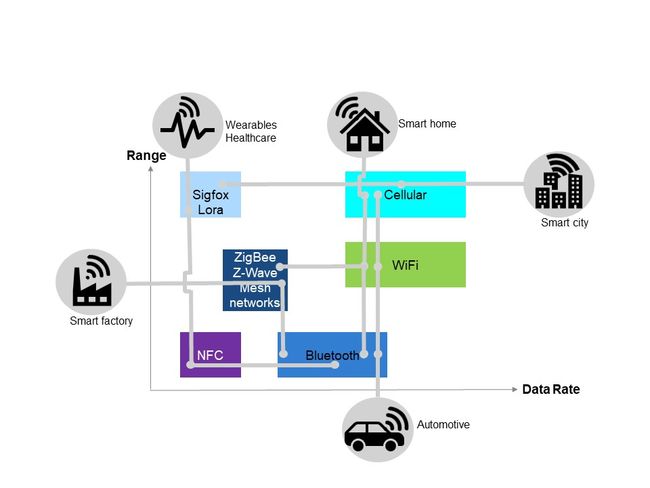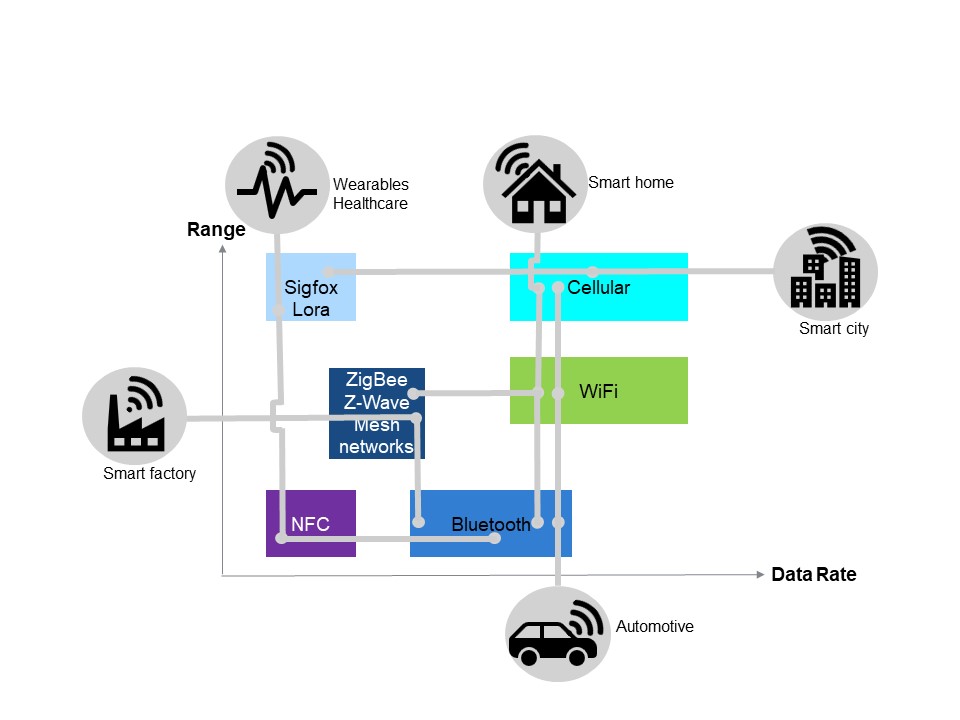Radio or wireless technology is key to many areas of technology such as satellite navigation systems (GNSS), Intelligent Transport, Internet of Things (IoT), drones (RPAS), etc.
This rise in the use of wireless interfaces in our daily life has led to the radio spectrum being affected not only by the appearance of new technologies, but also by their increasing demand for frequency bands.




Given that the radio spectrum is a natural and limited resource, greater control and vigilance over its use has been required in order to allow the coexistence of different existing technologies, taking into account the potential effects on public health.
This control is carried out through two mechanisms that are explained below:
1. The management of the radio spectrum.
Since the radio spectrum is a public asset, ownership and administration are conferred on the state.
In Spain it is the responsibility of the Secretariat of State for the Information Society and the Digital Agenda, whose function is the assignment of bands and the allocation of radio spectrum frequencies.
The legislation covering the spectrum is reflected in the National Frequency Allocation Table (CNAF for its acronym in Spanish), which contains the use reserved for each of the frequency bands into which the radio spectrum available for radiocommunications is divided, between 8.3 kHz and 3000 GHz.
The CNAF is the result of the transposition into Spanish legislation of the allocation of frequency bands and radio services arising from the agreements adopted by international bodies such as the International Telecommunication Union (ITU), the United Nations agency which decides the uses and conditions of use of different frequency bands, the European Conference of Postal and Telecommunications Administrations (CEPT) and the European Union itself.
The CNAF is published in the BOE (Spain's Official State Gazette) and can be consulted on the web of the Secretariat of State for the Information Society and the Digital Agenda http://www.mincotur.gob.es/telecomunicaciones/espectro/Paginas/cnaf.aspx.
In Europe, the principle of a harmonised European framework for frequency allocation and applications was adopted as a strategic framework for the use of the radio spectrum in Europe. Information on the allocation of frequencies in Europe can be accessed using the EFIS tool (https://www.efis.dk/)
2. The binding nature of the CE marking showing compliance with the European Directives that apply to this type of equipment.
The protection of the radio spectrum is set as an essential requirement of Directive 2014/53/EU (RED Directive) on the harmonisation of the laws of the Member States on the marketing of radio equipment, which establishes that radio equipment must be so constructed that it makes and promotes efficient use of the radio spectrum in order to avoid harmful interference.
Verification of compliance with this essential requirement of the Directive is done through harmonised standards that are drawn up and published by ETSI (European Telecommunications Standards Institute) under the mandate of the European Community and which set out the technical details to be complied with by the different existing technologies.
The importance of standardising this type of parameter in radio interfaces is to prevent interference between different technologies and, as previously mentioned, on public health grounds.
To verify that equipment makes efficient use of the radio spectrum, ALTER TECHNOLOGY can provide certification of the EU-type examination for the new Radio Equipment Directive (RED) 2014/53/EU thanks to its designation as a notified body for this Directive. Furthermore, in our testing laboratory we can offer a wide range of services that include, among others, tests on the protection of the radio spectrum for products under the RED Directive, in accordance with the scope of the ENAC 345/LE808 Rev. 24 accreditation.